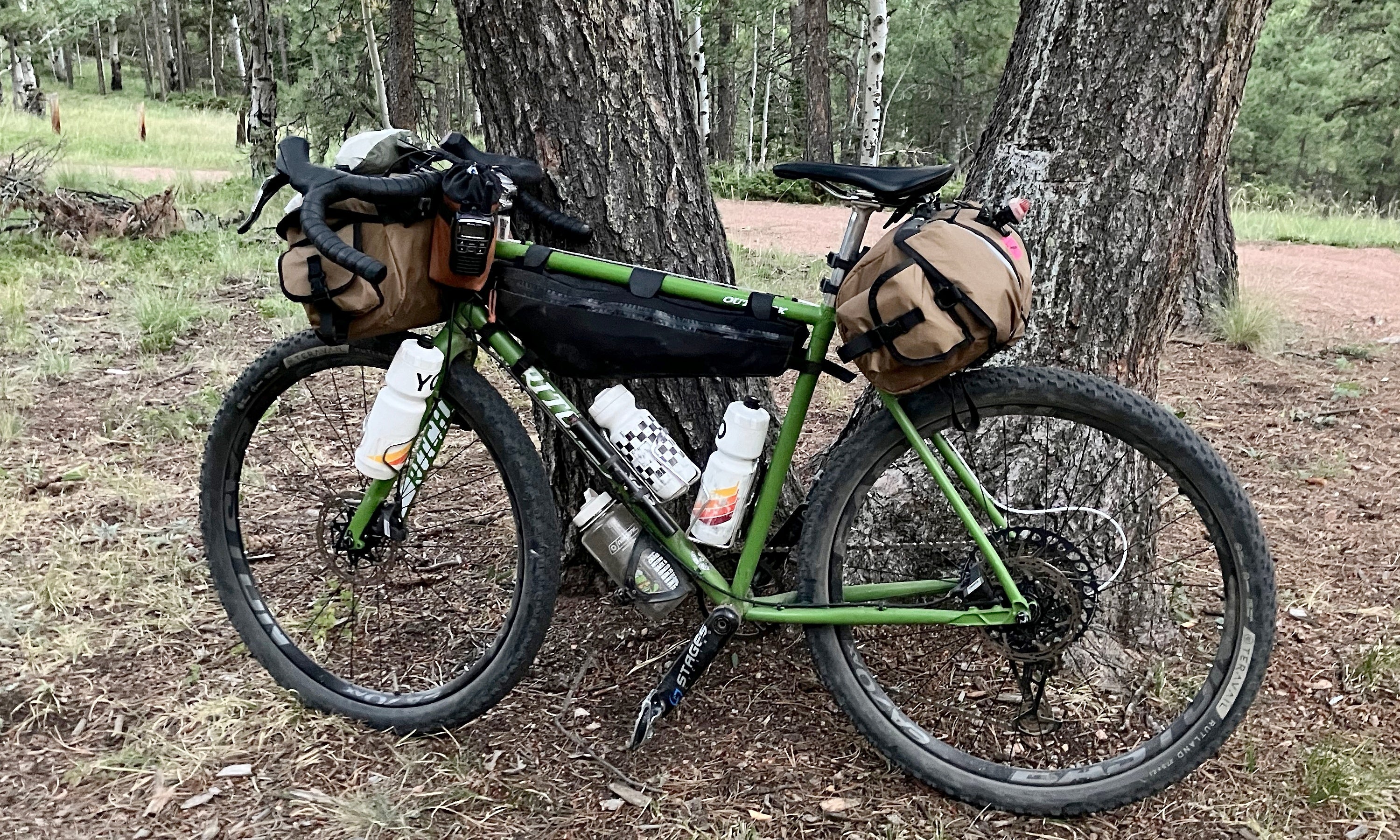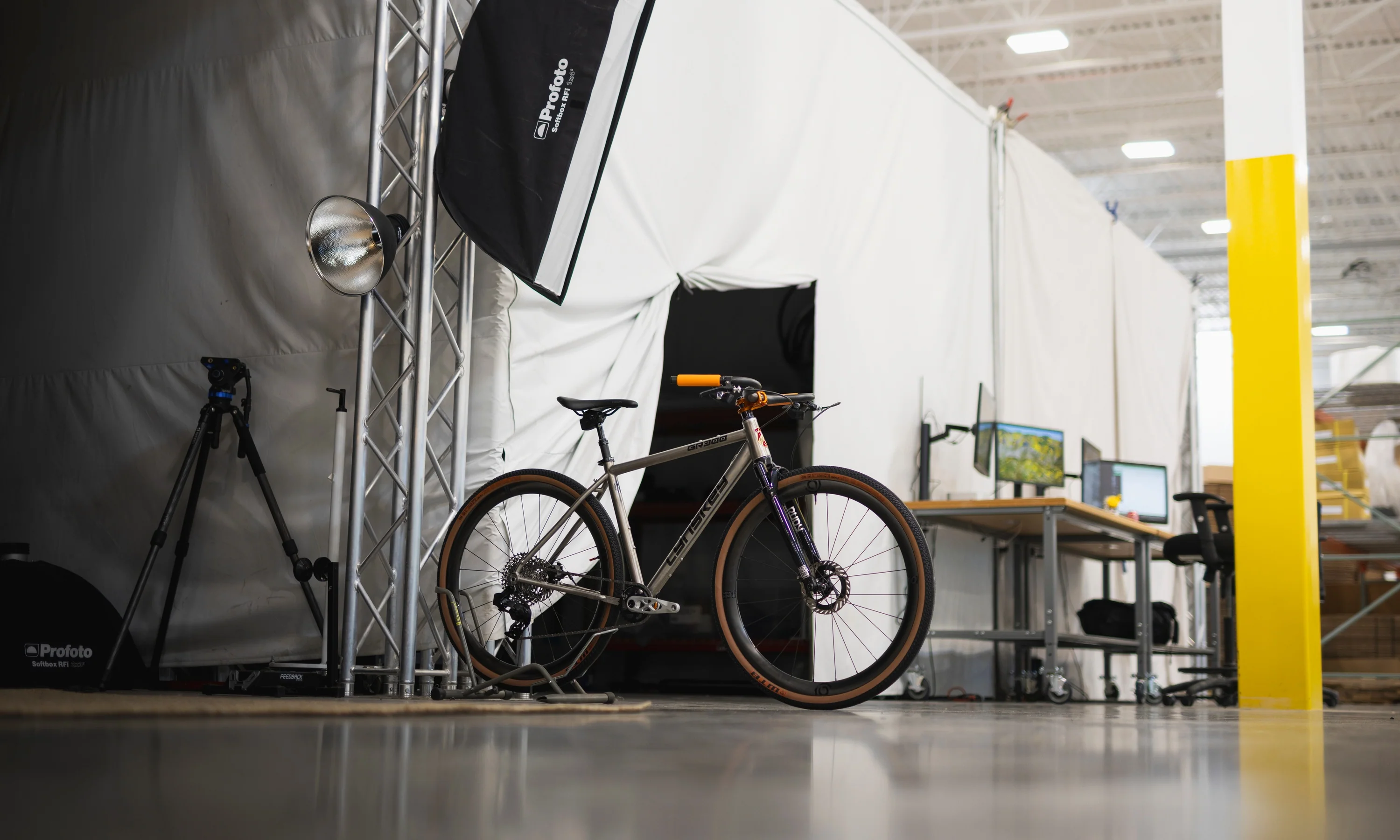No one knows their way around a used bike like a TPC Bike Technician. Every day, our team of professional mechanics will inspect, service, and repair nearly 100 bikes. They ensure that every Certified Pre-Owned bike we sell is safe, reliable, and ready for the next owner to enjoy.
If you have a used bike at home, you might see some of the same mechanical issues our Bike Techs fix on a daily basis. With a bit of work, you too can elevate your used bike to a similar standard as TPC’s Certified Pre-Owned bikes. Billy Finlay, one of our Master Technicians, explains the 10 most common fixes used bikes need to ride like new.
[button]SHOP CERTIFIED PRE-OWNED BIKES[/button]
1. Bike wash
 While not technically a “fix,” the first thing every used bike needs is a thorough wash. You don’t need a professional wash station like ours. Simply scrubbing down the entire bike with a soft sponge or brush and a gentle soap will return it to showroom condition. Removing the wheels during a wash makes it easier to reach every nook and cranny. Not only is a clean bike nicer to work on, but it’s necessary for a thorough inspection.
While not technically a “fix,” the first thing every used bike needs is a thorough wash. You don’t need a professional wash station like ours. Simply scrubbing down the entire bike with a soft sponge or brush and a gentle soap will return it to showroom condition. Removing the wheels during a wash makes it easier to reach every nook and cranny. Not only is a clean bike nicer to work on, but it’s necessary for a thorough inspection.
[product-block handle="muc-off-bike-care-kit-wash-and-drivetrain-essentials"/]
“Before we start working on any bike, we need to inspect it for damage,” Finlay explained. “A clean bike lets us spot cracks and other issues. Sometimes, just cleaning a really dirty and neglected bike will get it feeling close to new again.”
2. Bar tape/grip replacement
 Nearly every Certified Pre-Owned bike at TPC gets new handlebar tape or grips. Touchpoints like these see a lot of wear. Handlebar tape will often be dirty or torn and mountain bike grips get beat up from crashes. Fortunately, these are some of the cheapest and easiest components to replace.
Nearly every Certified Pre-Owned bike at TPC gets new handlebar tape or grips. Touchpoints like these see a lot of wear. Handlebar tape will often be dirty or torn and mountain bike grips get beat up from crashes. Fortunately, these are some of the cheapest and easiest components to replace.
There’s another benefit to replacing handlebar tape. It doesn’t happen often, but occasionally our Bike Techs discover a bike that smells a bit ripe.
“If a bike has an odor, it’s almost always coming from the bar tape,” Finlay explained.
Removing the tape, cleaning the handlebar, and replacing it with fresh tape ensures that a used bike is free of the accumulated sweat and grime from the previous owner. It’s a simple task that improves any used road or gravel bike.
[button]SHOP BAR TAPE AND GRIPS[/button]
3. Clean and lube or replace the chain
 A clean and lubed chain not only shifts better but also reduces drivetrain wear. Along with the rest of the drivetrain, the chain gets thoroughly degreased during the washing step. Before it gets lubed though, our Bike Techs check it for wear.
A clean and lubed chain not only shifts better but also reduces drivetrain wear. Along with the rest of the drivetrain, the chain gets thoroughly degreased during the washing step. Before it gets lubed though, our Bike Techs check it for wear.
[product-block handle="park-tool-cg-2-4-chain-gang-cleaning-kit"/]
“We use a chain checker tool to measure every chain,” Finlay said. “A lot of used bikes come in with worn chains that need to be replaced.”
[product-block handle="progold-prolink-chain-wear-indicator"/]
Chains usually need to be replaced at .75% stretch. Replacing a chain before it gets excessively worn increases the lifespan of other drivetrain components. You should immediately check chain wear on any used bike, and keep tabs on it by checking every month or so.
4. Derailleur adjustment
After degreasing the drivetrain and lubing or replacing the chain, it’s time to fine-tune the shifting. The two most common rear derailleur adjustments that used bikes require are indexing and b-gap. These adjustments will be easy for most home mechanics to perform. It’s also important to check for a bent rear derailleur hanger.
“If the shifting is really off, it’s often due to a bent hanger,” explained Finlay. “Your hanger is easy to bend in a crash, or just from your bike tipping over.”
Our Bike Techs use a derailleur alignment gauge to straighten bent derailleur hangers. This is a specialized tool, so you’ll need to buy one or take your bike to a shop. If you’re in a pinch and the bend isn’t too severe, it’s possible to straighten a hanger with a large crescent wrench, but we recommend using a dedicated tool for the best results.
5. Replace cables and housing
 Electronic drivetrains are becoming more common, but mechanical drivetrains still dominate the used bike market. Mechanical drivetrains rely on steel cables to shift, and when these cables become worn, stretched, or contaminated, they can lead to poor shifting.
Electronic drivetrains are becoming more common, but mechanical drivetrains still dominate the used bike market. Mechanical drivetrains rely on steel cables to shift, and when these cables become worn, stretched, or contaminated, they can lead to poor shifting.
“Fresh cables and housing really improve the shift feel,” Finlay said. “Ideally, cables and housing get replaced every year, especially if you ride in harsh conditions.”
Most riders, however, tend to neglect their cables and housing. If a used bike is inconsistently shifting or ghost shifting, bad cables and housing are often the culprits.
[newsletter]
6. Replace tires/refresh sealant
 New tires provide more grip and resist punctures better. It’s easy to tell when mountain bike or gravel tires are worn because the knobs will be chewed up or worn down. Many slick road tires have wear indicators, but they should be replaced sooner if they have a noticeable flat spot down the center.
New tires provide more grip and resist punctures better. It’s easy to tell when mountain bike or gravel tires are worn because the knobs will be chewed up or worn down. Many slick road tires have wear indicators, but they should be replaced sooner if they have a noticeable flat spot down the center.
[product-block handle="stans-notubes-tubeless-tire-sealant-16oz-1"/]
Tubeless tires are also becoming more common, and our Bike Techs now regularly refresh tubeless sealant. Depending on your climate, sealant will usually last around three months. Many used bikes arrive with the sealant completely dried up. Our Bike Techs check the sealant level inside every tubeless tire. If it’s dried up, they will clean out the tires and tubeless valves and add fresh sealant to make sure tubeless tires hold air and are ready to ride.
[button]SHOP TIRES[/button]
7. Replace brake pads and bleed hydraulic brakes
“A lot of riders don’t service their brakes as often as they should,” Finlay said. “New pads and a bleed will make them feel like new again.”
It’s fairly cheap and easy to replace brake pads at home. Our Bike Techs replace any brake pad that’s reached 50% wear. Once pads are about halfway worn, the brake lever throw will feel much longer. Replacing pads at 50% keeps brakes feeling tight and responsive.
 [product-block handle="sram-standard-disc-brake-bleed-kit"/]
[product-block handle="sram-standard-disc-brake-bleed-kit"/]
If you have hydraulic disc brakes that feel spongey or inconsistent, they likely need a bleed. Our Bike Techs bleed any and all hydraulic disc brakes to remove air in the lines and ensure every bike has fresh brake fluid. Brake bleeding is easy to do at home, as long as you have the required bleeding tools for your specific brake system.
8. Wheel truing
 No one likes riding a wobbly wheel. Truing a wheel is best done with a spoke wrench in a truing stand. Among our Bike Techs, a select few are extremely good at truing wheels. Truing a wheel can be a tricky skill to master, but it can be incredibly meditative and satisfying.
No one likes riding a wobbly wheel. Truing a wheel is best done with a spoke wrench in a truing stand. Among our Bike Techs, a select few are extremely good at truing wheels. Truing a wheel can be a tricky skill to master, but it can be incredibly meditative and satisfying.
[product-block handle="feedback-sports-spoke-wrench"/]
Some used bikes will have wheels that aren’t salvageable. If that’s the case, then the best fix is to replace the rim or the wheel entirely.
[button]SHOP WHEELS[/button]
9. Suspension service
 Servicing the suspension can completely revive an old mountain bike. Many riders don’t service their suspension enough, or they will sell their bikes before a necessary service. There’s no easy way to determine how many hours or miles a used suspension fork or shock has seen, but if it feels sticky or harsh, or it’s making excessive noise, it will likely need new seals and fluid. It’s worth servicing the suspension on any used mountain bike over a year or two old, even if it doesn’t seem necessary, because it will keep used suspension components feeling plush for longer.
Servicing the suspension can completely revive an old mountain bike. Many riders don’t service their suspension enough, or they will sell their bikes before a necessary service. There’s no easy way to determine how many hours or miles a used suspension fork or shock has seen, but if it feels sticky or harsh, or it’s making excessive noise, it will likely need new seals and fluid. It’s worth servicing the suspension on any used mountain bike over a year or two old, even if it doesn’t seem necessary, because it will keep used suspension components feeling plush for longer.
This is the most advanced repair on this list, but intrepid home mechanics should be able to do a basic seal and fluid replacement at home. Otherwise, you’ll need to take your suspension to a bike shop or specialized suspension shop. At TPC, we have dedicated Suspension Technicians who make sure every Certified Pre-Owned mountain bike rides like new.
10. Bolt check with a torque wrench
This last fix is one of the simplest, but also one of the most important. Before any Certified Pre-owned bike leaves TPC, it receives a full bolt check with a torque wrench.
[product-block handle="pedros-fixed-torque-driver"/]
A regular bolt check is always a good idea, even on brand-new bikes. It ensures that critical components don’t come loose and ruin your ride, or worse, cause injury. With carbon components like handlebars and seatposts, this ensures that bolts aren’t over-torqued, which can damage the carbon. In the case of dropper seatposts, sticky or slow seatposts are sometimes due to over-tightened seatpost clamps.
Here are the key bolts worth checking regularly:
- Stem faceplate and steerer clamp bolts
- Seatpost clamp bolt
- Saddle rail clamp bolts
- Brake caliper/rotor mounting bolts
- Derailleur mounting bolts
- Suspension linkage bolts
- Crankset and chainring bolts
- Thru-axles
[button]SHOP CERTIFIED PRE-OWNED BIKES[/button]













